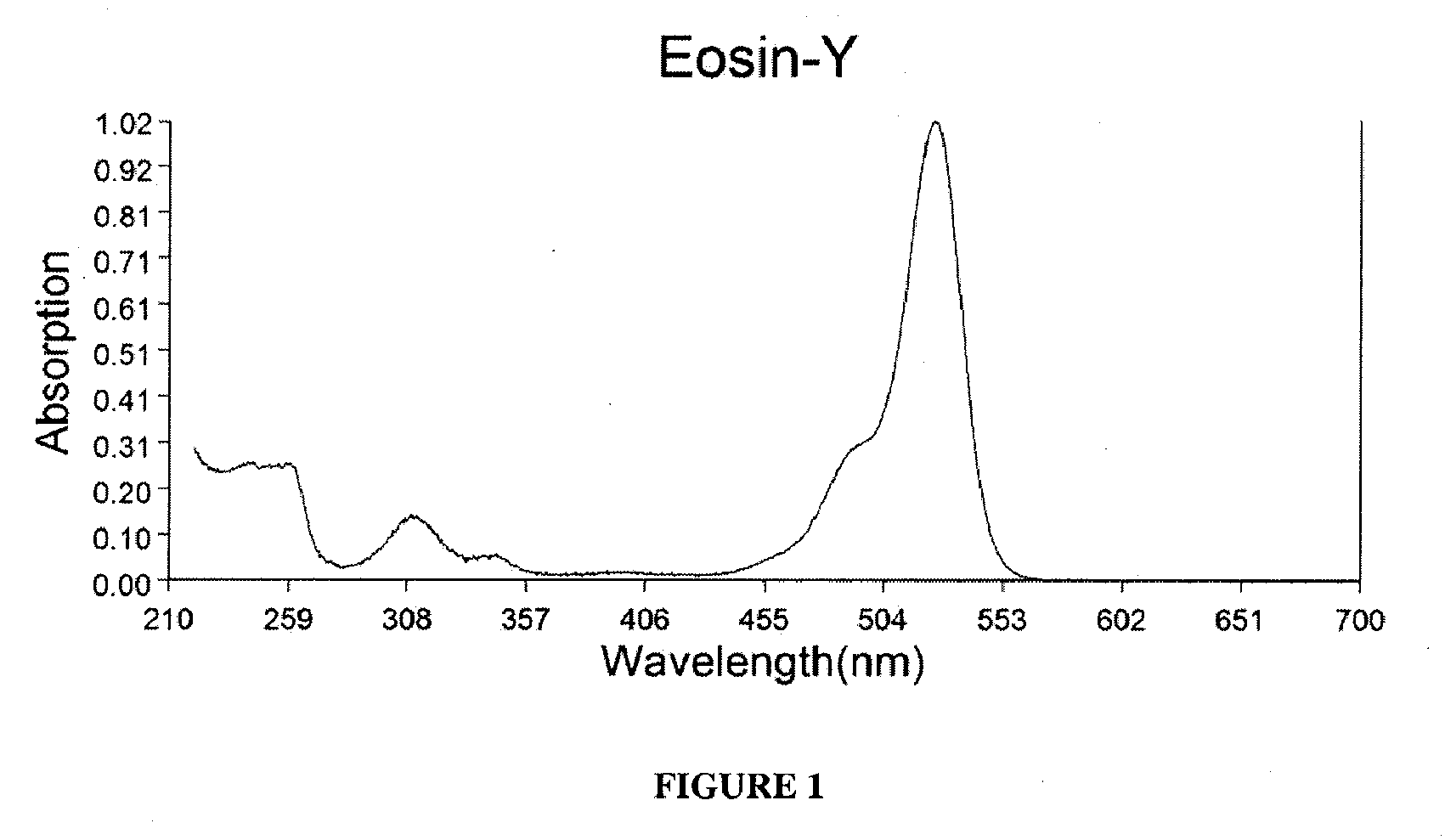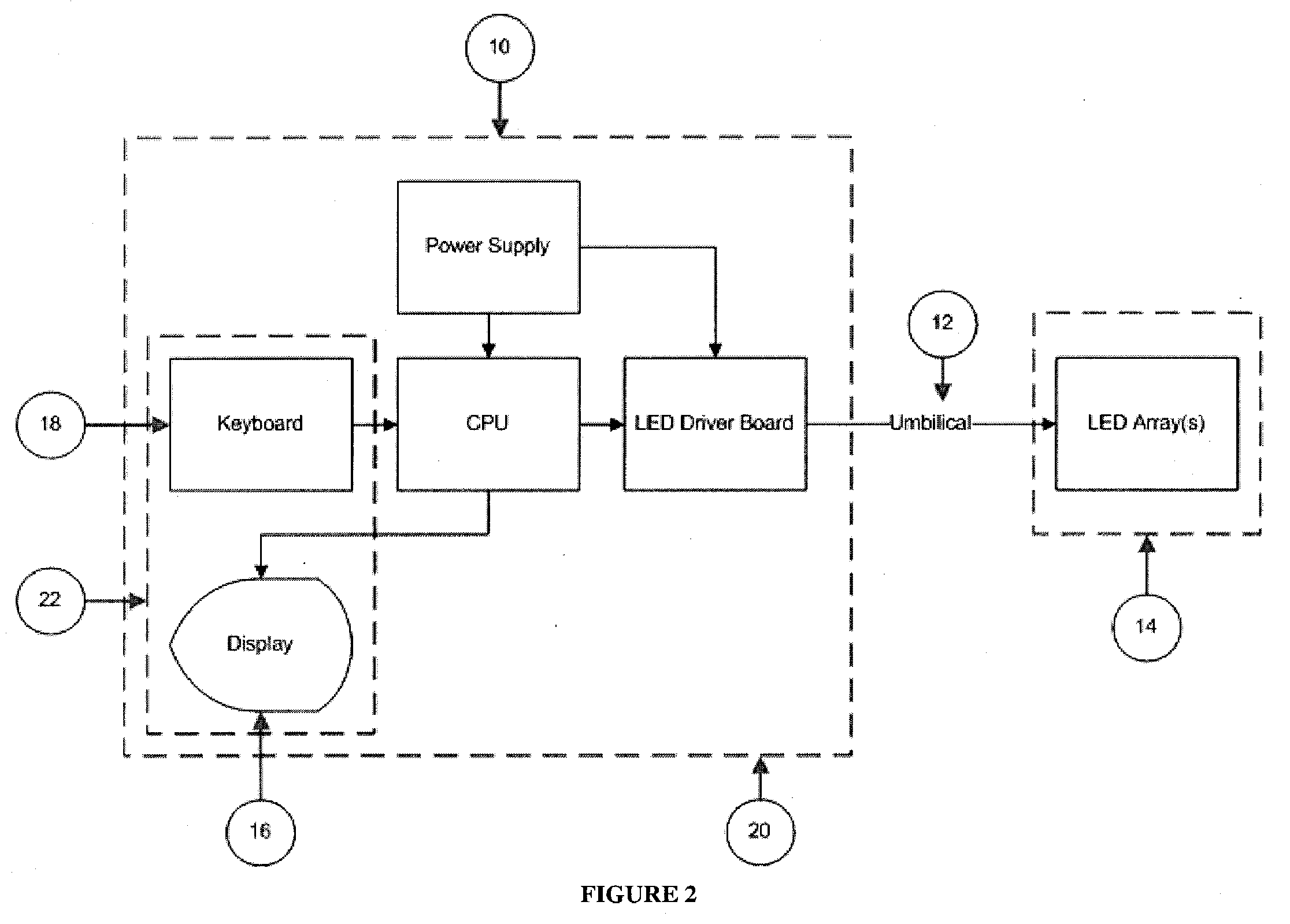Systems and Methods for Transdermal Photo-Polymerization
a technology of photopolymerization and dermal fillers, applied in the field of system and method of photopolymerization dermal fillers, can solve the problems of high cost of devices, large and complex use, burns and other damage to exposed skin, etc., and achieve the effect of less cost, advantageous elimination of potential adverse effects, and convenient us
- Summary
- Abstract
- Description
- Claims
- Application Information
AI Technical Summary
Benefits of technology
Problems solved by technology
Method used
Image
Examples
example 1
[0059]A dermal filler may be prepared in the following manner. An initiator solution may be prepared by dissolving 250 μg of eosin Y into 1 ml of NVP solution and vortexing until dissolved. PEGDA solution may be prepared by dissolving 200 mg of PEGDA in 100 μl of the initiator solution and 100 μl of PBS. The PEGDA solution may be used the same day.
[0060]Sixty μl of TEA may be added into 200 μl of the PEGDA solution. This may be a very viscous solution and may need to be pipetted very slowly and carefully. Then 40 μl of initiator solution may be added. This combination may be mixed on a vortex until uniformly pink throughout and is somewhat transparent pink with no particles of PEODA 3400. The material may be spun in a centrifuge to remove air bubbles, which may make it difficult to determine if the solution is well mixed. If particles are present, the material may be vortexed and then spun again in a centrifuge.
[0061]The photofiller solution may be stored in a foil covered tube to a...
example 2
[0062]A light emitting device was assessed for ease of use and was tested for ability to polymerize a photofiller by varying lengths of time ranging from 5 to 30 seconds. The light emitting device is a very light compact device with a handheld LED-based light source which may be simple and easy to operate. The light-emitting device may weigh under 15 pounds and be less than 12 inches on a side. Preferably, it does not produce heating effects even when illuminating human skin for long periods of time. It was extremely efficient at inducing photo-polymerization of photofiller in vitro as well as transdermally in a mold and in vivo after intradermal transplantation. In addition, the device did not produce any detectable heating of the skin, even when placed against the user's forearm for more than a minute with constant full-power illumination.
[0063]The light-emitting device was tested for its ability to induce photo-polymerization of photofiller in a mold in vitro, transdermally in a ...
example 3
[0068]An LED-based device and an Intense Pulsed Light (IPL) device were compared for their ability to polymerize samples of photofiller material. The intent of this experiment was to compare the ability of an LED-based device (which emits only a narrow portion of electromagnetic spectrum) to the ability of an IPL device (which emits a broad range of the electromagnetic spectrum and is quite damaging to skin) to induce photofiller polymerization. The comparison was performed as follows.
[0069]A photofiller solution was prepared with the following recipe. An initiator solution was made by dissolving eosin Y disodium salt (Sigma-Aldrich CAT# 45235)) in PBS (1.375 μg / mL eosin Y). 100 mg PEODA (3.4 KD MW SunBio CAT# P2AC-3)) was dissolved in 50 μL of initiator solution, 30 μL of PBS, and 20 μL of N-vinyl pyrrolidone (Sigma-Aldrich CAT# 95060). Final solutions were prepared by mixing this PEODA solution with 30 μL of triethanolamine (Sigma-Aldrich #90278) and 1 mL of PBS.
[0070]100 μL of th...
PUM
| Property | Measurement | Unit |
|---|---|---|
| Time | aaaaa | aaaaa |
| Ratio | aaaaa | aaaaa |
| Nanoscale particle size | aaaaa | aaaaa |
Abstract
Description
Claims
Application Information
 Login to View More
Login to View More - R&D
- Intellectual Property
- Life Sciences
- Materials
- Tech Scout
- Unparalleled Data Quality
- Higher Quality Content
- 60% Fewer Hallucinations
Browse by: Latest US Patents, China's latest patents, Technical Efficacy Thesaurus, Application Domain, Technology Topic, Popular Technical Reports.
© 2025 PatSnap. All rights reserved.Legal|Privacy policy|Modern Slavery Act Transparency Statement|Sitemap|About US| Contact US: help@patsnap.com



